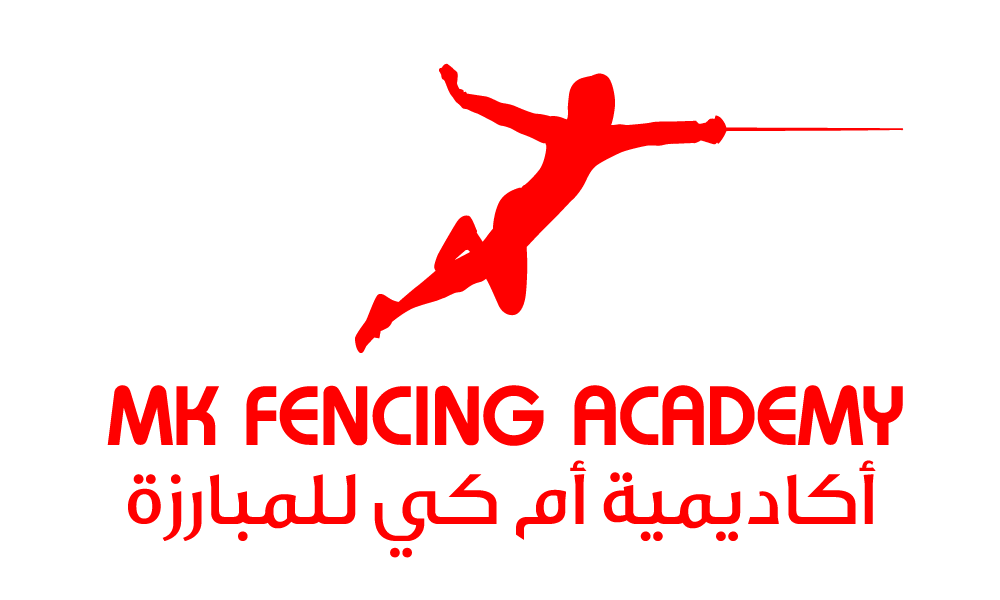WE CARE ABOUT YOUR SAFETY
RULES
- Mask, jacket, under plastron, chess protection, long pants, and glove must always be worn when fencing. (All equipment must be 350 N and above)
- The fencing swords are to be treated with respect and awareness at all times. Swords must be carried point down at all times. They are not toys. A sword is only pointed at another person when that person is fully masked and ready to fence or drill.
- Fencers must always be masked when swords are raised, point forward. This means on all occasions, including discussion of actions and during drills.
- Violent fencing actions are not permitted. Fencers must control parries and attacks so that the opponent is not injured by whipping or hard stabbing actions of the blade. If you cannot execute a flick properly, don’t do it. Do not cause body contact nor use the unarmed hand against your opponent. Do not turn your back on your opponent.
- Stop fencing instantly if you think something is wrong or if your opponent retreats and waves the unarmed hand or gives any sign of wanting to stop.
- If you think a sword is broken, stop fencing instantly.
- If you counterattack, you are responsible for preventing body contact, injury, and weapons breakage.
- If you feel a fencer is behaving in a dangerous or uncontrolled fashion, report it to the coach immediately. They will speak to the fencer without disclosing your identity.
- Inspect your swords and mask each time you use them. If you are using academy gear and find any problem please report it to coach. Do not put it back into the storage without reporting it. The Academy has maintenance schedule and all equipment is checked frequently.
- Wear proper shoes for fencing (indoor trainers or fencing shoes). Please be sure that shoes are clean when entering the fencing floor to avoid dust and moisture build-up which make the floor slippery.
- Fencers on the floor have right of way. Persons not fencing are obligated to keep themselves and their gear clear of fencers on the floor.
- If injury occurs, please report it immediately to the coach.
GUIDELINES FOR STUDENTS
The goal is to teach the art and science of modern fencing in a safe environment of mutual respect and self-discipline.
MKFA has traditions to promote respect for yourself, your opponent, the coaches, the swords, and the tradition itself, as well as promoting safety. Violations of safety or sportsmanship will not be tolerated. Violators may be dismissed from class or the venue at the coaches’ discretion.
- It is expected that each student enter and exit the venue respectfully
- Students should respond to a coach’s request or direction promptly and respectfully
- Each fencer will salute their opponent, the referee, and the audience before every bout, and salute their opponent and shake hands after every bout.
- Academy-owned masks, clothing and swords should be returned to the storeroom when training is over. During training equipment should be placed (not dropped!) on the floor during breaks. Jackets should be placed neatly on the hanger after each use, along with gloves and other academy equipment.
- Cheering for other fencers is encouraged, but name calling and displays of poor sportsmanship are not acceptable.
- Food and beverages are discouraged near the fencing floor. Fencers are expected to clean up after themselves on the fencing floor and in the bathrooms. In the academy, each fencer is responsible for maintaining a clean, safe environment for learning. We depend upon each another for the maintenance of the academy venue.
The sport of fencing is, by its very nature, competitive. In any given encounter, one person will be victorious, and one will be defeated. Learning to accept victory gracefully is at least as important as learning that defeat can be a lesson. Thus fencing by its very nature teaches sportsmanship, resilience, and mental toughness.
The heart of the MKFA is its students. Following these guidelines, students and coaches can create a safe, fun learning environment.
DOES IT HURT? SOMETHING THAT YOU SHOULDN’T BE WORRIED ABOUT.
Not if done properly. Even if executed with appreciable energy, a good, clean fencing attack hurts no more than a tap on the shoulder. The force of the blow is normally absorbed by the flex of the blade. Irresponsible and overly aggressive fencers can occasionally deliver somewhat painful tushes. However, fencing is a martial art, so you should expect minor bruises every now and again. They are not intentional. The most painful tushes tend to come from inexperienced fencers who have not yet acquired the feel of the sword.
The primary source of injury in fencing is from pulled muscles and joints. Proper warm up and stretching before fencing will minimize these occurrences. As with any sport or physical activity there is always a risk of injury. Common sense precautions and realistic training goals are the best prevention.
